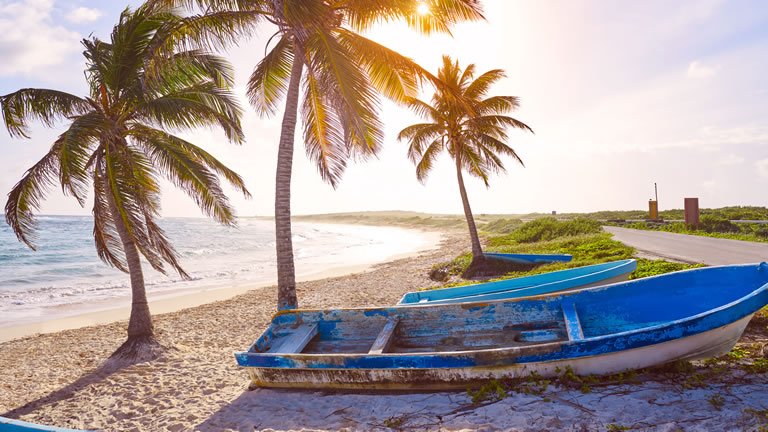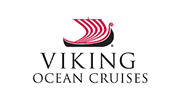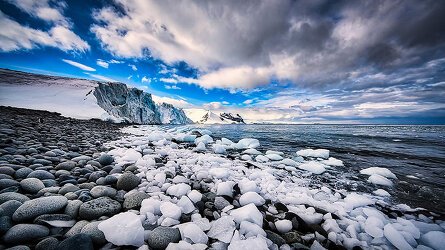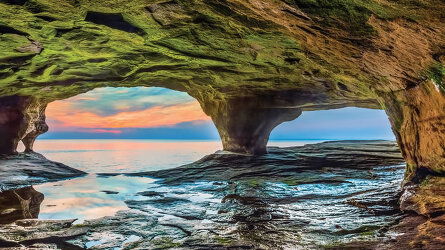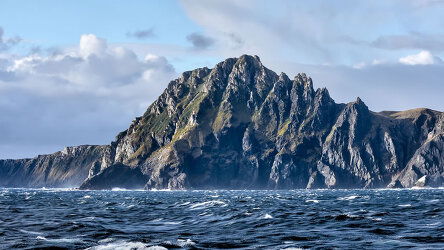
Overview
Itinerary
Arrive and check in to your hotel. Buenos Aires, Argentina's cosmopolitan capital, is an eclectic combination of Latin and European influences. The tree-lined streets and postcolonial architecture draw on the city's Spanish, French and Italian heritage, while the many cafés and bodegas and vibrant nightlife are decidedly Argentine. Its barrios, or neighborhoods, exude an intimate atmosphere that belies the city's size. Full of bohemian flair, historic San Telmo's cobblestone streets and Belle Époque–style buildings reverberate with the mesmerizing melodies of the tango.
After breakfast, check out of your hotel and board your charter flight to your embarkation city. Ushuaia is the southernmost city in the world. Its splendid setting, tucked between the Beagle Channel and the southernmost slopes of the Andes, lends it an outpost atmosphere, as do the Antarctic explorers readying for the expeditions that depart from here. Ushuaia is the capital of and gateway to the celebrated Tierra del Fuego, the “Land of Fire,” named by Spaniards upon seeing the constant flames burned by the indigenous Yámana to keep warm. This largely unspoiled region comprises the large island of Tierra del Fuego and countless Chilean and Argentine islands.
Named for 16th-century English privateer Sir Francis Drake, the frigid waters of the Drake Passage stretch for some 600 miles between Cape Horn and Livingston Island in the South Shetland archipelago. Meet fellow guests and listen to the soothing sounds of classical music in the Living Room, an ideal setting for relaxation. Enjoy a cup of coffee or sip on a refreshing cocktail.
At once ethereal and majestic, Antarctica has inspired explorers and adventurers for centuries. In this icy wilderness, marvel at icebergs glimmering in serene bays and mountains cloaked in white rising from the mainland basalt cliffs. These stunning landscapes evoke both utter tranquility as fur seals lounge on a floating sheet of ice, and breathtaking drama as glaciers thunderously calve into the sea. In these cold and nutrient-rich waters, humpback, fin and giant blue whales have been known to greet expedition ships that venture into their habitat.
Trace the Mid-Atlantic Ridge, an underwater mountain range longer than the Rockies, the Himalayas and the Andes combined. Its hidden towering peaks divide the Atlantic Ocean in half, North to South. As you sail, take advantage of the array of delicious cuisine offered on board. You may visit Mamsen's, our casual gourmet deli, any time from early morning to late at night for a taste of traditional Norwegian fare. Or, dine at Manfredi's and savor an authentic Italian meal, with options ranging from Milanese risotto to Tuscan inspired classics.
South Georgia is untamed beauty, with its rugged landscapes, mountainous hillsides and spectacular glaciers. It was founded by Captain James Cook in 1775 and has featured on many explorers' maps since. Sir Ernest Shackleton first traversed these waters in 1916, returning in 1921 in an attempt to map the coastline of the Antarctic. To this day, South Georgia remains one of the least visited places on earth. While it remains permanently uninhabited by humans, it is home to an abundance of wildlife, including king penguins, albatross, as well as elephant and fur seals.
Follow in the wake of the great explorers, including Captain James Cook, who traversed these waters, claiming the island of South Georgia for Britain in 1775. Enjoy the amenities of your ship as you sail. Perhaps take a breath of fresh air on a brisk walk around the Promenade or begin your day with a workout in the well-equipped Fitness Center.
The Falkland Islands are a British Overseas Territory comprising almost 800 small islands. Visitors to the main island of East Falkland, from curious travelers to expedition ship crews en route to Antarctica, experience British warmth in Port Stanley's pubs and at the charming Victorian stone church. Remarkably, there are about 200 sheep for every person in this starkly beautiful archipelago, yet the Falklands are also known for their biological diversity. Five penguin species call the islands home, from the king penguins to the gentoo, and the Magellanic on farther shores.
West Point Island boasts some of the most magnificent coastal vistas with soaring cliffs spilling into the surf. This visually dramatic land was founded as a sheep farm in 1879 by Arthur Felton. Today, his great-nephew Roddy Napier owns the entire island; he and his wife Lily oversee the farm and regularly welcome travelers. The island and its neighbors also enjoy status as an Important Bird and Biodiversity Area with BirdLife International. Significant species include the Falkland steamer duck, black-browed albatross, southern rockhopper penguin and Magellanic penguin.
Sail the legendary waters of the South Atlantic Ocean, where intrepid explorer Sir Ernest Shackleton navigated the fateful voyage of the Endurance, which resulted in her sinking in Antarctic waters in 1915. Renew your body, mind and spirit in our Scandinavian-inspired Spa, a Nordic sanctuary of holistic wellness, today while at sea. Whether you unwind in the Sauna, refresh in the Snow Grotto or take a dip in the Thermal Pool, you will feel recharged and revitalized.
The “city at the end of the world” is one of the planet's most breathtaking destinations; Andean peaks, pristine lakes and boreal forests create a dramatic backdrop, surrounding this captivating coastal town. Although Ushuaia lies more than 600 miles north of Antarctica, the city's port is still the closest to the “Last Continent” and the starting point for its exploration. The majesty of Antarctica's landscape attracts visitors seeking adventure, with its packed ice plains, rugged mountains and abundance of wildlife, such as whales, seals and various species of penguin.
Rising above the point where the Atlantic and Pacific Oceans converge, Cape Horn, named for the Dutch city of Hoorn in The Netherlands, is part of the Hermite Islands archipelago. This remote, stark and treeless place is often considered the continent's southernmost point. Soaring from Hornos Island is an enormous prehistoric-looking massif of Jurassic volcanic rock. Atop, stands its historic lighthouse near the water's edge. A beacon of assurance and safety for countless sailors since 1991, it is the world's southernmost traditional-style lighthouse.
The pristine waters of the Garibaldi Fjord weave their way through the Alberto de Agostini National Park in Chile, where the Andes mountain range meets the ocean. The region is a UNESCO Biosphere Reserve and its majestic natural wonders are home to an array of wildlife. Its valley walls are covered with ice and floating icebergs drift along with the bobbing heads of seals and sea lions. The Garibaldi Glacier feeds the waters of the fjord, and this retreating 12 square mile spectacle dwarfs any vessel that passes by.
Spanning the border of Chile and Argentina, the Southern Patagonian Ice Field stretches along the spine of the Andes Mountains for more than 200 miles. Chile itself is home to almost 80% of South America's glaciers, covering an estimated 7,700 square miles. These glaciers act as enormous freshwater reserves for the mountain habitats across Patagonia, helping to sustain the region's diverse plants and wildlife.
Punta Arenas was founded as a penal colony by Chile in 1848. Nestled amid spectacular mountain vistas on the eastern shores of the Brunswick Peninsula, it played host to mariners crossing the continent by ship. Europeans followed, searching for newly discovered gold and establishing vast swaths of sheep farms locally and throughout the surrounding region. Over time, Punta Arenas became one of Chile's most important ports as, before the opening of the Panama Canal, it laid on the northernmost transcontinental shipping route.
A pristine paradise of soaring peaks, countless lush islands teeming with wildlife and a tapestry of glaciers and rivers spilling into shimmering waters, the fjords of Chile are heralded as one of the most rugged and untamed places on earth. The crystal waters are a breathtaking sight as they journey through vast ice fields, towering mountainsides and serene fishing villages that hug tranquil shores against backdrops of dramatic forested hills.
The gigantic Patagonian Ice Sheet covered southern Chile in a thick blanket of ice and snow during the last Ice Age. Around 12,000 years ago, rising temperatures caused it to begin melting, carving out the Patagonian landscape as it receded. Today, two vast sections, northern and southern, remain of this ancient ice sheet. Together, they cover more than 5,400 square miles and form the third largest frozen landmass on Earth. At their edges are towering glaciers of blue-tinged ice, whose ever-changing faces create the large icebergs that float in the fjords and channels.
The fjords and channels of Chile were first inhabited by indigenous people who used the wood of the endemic Pilgerodendron uviferum, a conifer tree, to build their canoes and homes. Spanish conquistadors began exploring the region during the mid-16th century, navigating the fjord's internal passageways to avoid the heavy seas and bad weather of the Pacific Ocean. The harsh climate and declining local populations limited colonial expansion, leaving the fjords sparsely populated—a situation that continues to this day.
Puerto Chacabuco is a tiny Patagonian enclave and gateway into the spellbinding beauty of the rugged wilderness. The port was named for the 1817 Battle of Chacabuco, a pivotal moment during the Chilean War of Independence, in which national hero José de San Martín of the Army of the Andes defeated the royalist forces. Jagged rocky peaks with deep-cut gorges, icy-blue glaciers spilling into the sea and pine-green forests clinging to steep slopes dominate this untouched region, one of the most inspiring and breathtaking corners of the globe.
The picturesque Chilean Fjords stretch nearly 1,000 miles from Cape Horn at the South American continent's southern tip to the Reloncaví Estuary just below the city of Puerto Montt. Carved out by receding glaciers starting more than 2.5 million years ago, the fjords are composed of several hundred channels and passages that wind their way past walls of blue ice, dense forests and steep mountain ranges. Its rugged coastline is home to colonies of Magellanic penguins and lazing elephant seals, while its waters welcome dolphins, migrating humpback whales and orcas on the hunt.
Sail Mar Pacífico, meaning “peaceful sea,” dubbed by Ferdinand Magellan when he crossed these waters almost 500 years ago. As you sail today, attend an informative lecture or watch a film on our 8k laser-projected panoramic screen in The Aula, one of the world's most advanced venues for learning at sea. This indoor-outdoor experience allows nature to take center stage with its retractable floor-to-ceiling windows that unveil 270° views.
Chile's modern capital of Santiago is one of the largest cities in the Americas. Its impressive neoclassical, neo-Gothic, art deco and other architecture spans several centuries. Santiago's gateway, Valparaíso, is often compared to San Francisco for its many cerros, or hills. The city prospered as a major port until the opening of the Panama Canal rendered it unnecessary. Quaint Victorian-era architecture recalling its 19th-century affluence and steeply sloped barrios are linked by ascensores, or funiculars, and winding byways. From Los Cerros, the views are spectacular.
Traverse the world's largest ocean, which covers almost 64 million square miles. At twice the size of the Atlantic, the Pacific is an ocean of extremes. As you sail today, relax in the Explorers' Lounge, inspired by epic journeys of discovery. Marvel at the views through the two-story panoramic windows as you share a cocktail with friends, or settle down to read a book.
Iquique enjoys a scenic locale between the Pacific Ocean and the Pampa del Tamarugal, a vast plateau within the Atacama Desert. This bustling city was once part of Peru and grew prosperous from saltpeter mining. It was ceded to Chile in 1883 after the War of the Pacific. Today, Iquique boasts many architectural treasures around its central Arturo Prat Square, from the stately Municipal Theater and the elegant Casino Español to a Gothic and Moorish-style Clock Tower. The city's well-preserved Georgian-style homes are a picturesque legacy from the 19th-century mining boom.
Sail the Pacific Ocean, its vast expanse of waters covers more than 30 percent of the Earth's surface and touches the continents of Asia, Australia, North and South America. Spend a relaxing day at sea to unwind and admire the vistas from your stateroom veranda.
Lima was founded in 1535 by Francisco Pizzaro as La Ciudad de los Reyes, or “City of Kings.” It soon grew into the capital of Spain's Viceroyalty of Peru and established the oldest university in the Americas, the National University of San Marcos. One of the most cosmopolitan cities in South America, Lima's extravagant collection of architecture spans the centuries: early colonial, Spanish baroque, neoclassical and Art Nouveau buildings all adorn the cityscape. The historic center, graced with hundreds of balconies built during the viceroyalty era, is a UNESCO Site.
Cross the Pacific Ocean and learn about its fascinating geology, with more than 75,000 volcanoes—many still active—reaching up from its depths. As you sail today, savor a range of international cuisine on board. Choose from a variety of international flavors at the World Café, enjoy al fresco dining on the Aquavit Terrace, or regional specialties in The Restaurant.
Manta has long been closely linked to the rhythms of the sea. The city boasts the largest seaport in Ecuador and a bustling fish market brimming with sea bass, tuna and countless other delicacies. Local Manabita fare is a celebrated gastronomic tradition and considered by Ecuadorians to be one of their country's finest cuisines. Founded as a pre-Columbian trading post known as Jocay, the city is also recognized for its heritage with craft exhibits. But the craft scene really thrives in nearby Montecristi, renowned for its intricate wickerwork and original Panama hats.
The Pacific Ocean may have been officially discovered in 1521, yet early civilizations have been traversing these waters since 3000 BC. Enjoy the amenities of your ship as you sail. Perhaps take a breath of fresh air on a brisk walk around the Promenade or begin your day with a workout in the well-equipped Fitness Center.
The Panama Canal connects the Pacific and Atlantic Oceans, crossing the narrowest stretch of the Isthmus of Panama. A full transit through the 48-mile-long canal takes around eight to ten hours and passes through the Gatun Lake and the Culebra Cut, an artificial valley that runs through the Continental Divide. An engineering marvel of the 20th century, the crossing passes through a series of locks that lift and lower ships 85 feet from sea level, guided by electric locomotives known as mulas. The Panama Canal transit is a rite of passage and a truly memorable experience.
Colón lies near the Panama Canal's Atlantic entrance. During the California gold rush, prospectors from the eastern United States sailed here, trekked across the narrow isthmus of Panama, then sailed up the Pacific coast, believing the journey easier than traversing the entire United States. Indigenous tribes maintain a strong presence in this northern corner of Panama. In the city's rural reaches, the Emberá people—descended from ancient tribes—live in thatched-roof huts, travel by dugout canoe and weave traditional baskets.
Sail through turquoise waters where legends of marauding pirates, swashbucklers and tales of hidden treasures were born. Soak up the views from the Finse Terrace, a unique outdoor lounge area named after a famous mountain plateau in south-central Norway. Relax amid your surroundings in comfort, with heated couches and lava rock 'firepits,' allowing you to enjoy the outdoors no matter the temperature, as you admire the dramatic scenery or expansive ocean vistas.
The island of Cozumel holds the keys to many of the most intriguing secrets of Mexico's ancient civilizations. At San Gervasio, pre-Columbian women made offerings to Ix Chel, goddess of the moon and fertility. More recently, the Spanish left marks of their early presence in the colorful colonial architecture and lively traditions of San Miguel and at the scenic lighthouse at Punta Sur. Today, this island off Mexico's Yucatán Peninsula attracts as many snorkelers as it does history buffs; the Cozumel Reefs National Marine Park is the world's second-largest coral reef system.
The Gulf of Mexico has been a witness to much of the history of North and Central America. In 1497, Amerigo Vespucci was purportedly the first European to sail into the gulf's basin, charting its coast and changing the world map. Linger on the Sun Deck of your veranda for vistas of azure and turquoise as you sail through some of the world's most beautiful waters. Perhaps you will take a dip in the Infinity Pool or stroll the Promenade Deck.
A beloved leisure destination for Floridians and visitors alike, the Ft. Lauderdale area exudes the carefree attitude of South Florida's coast. In Miami, a thriving Cuban culture infuses Old Havana and gleaming high-rises overlook Biscayne Bay. On the outlying barrier islands, South Beach is an intoxicating blend of seaside glamour and art deco pastel brilliance. Farther north, the seven-mile-long Ft. Lauderdale Beach provides a more leisurely ambience. Along Las Olas Boulevard, cafés and boutiques invite lingering and endless browsing.
Sail the Atlantic Ocean, divided in half, north to south, by the Mid-Atlantic Ridge. Longer than the Rockies, the Himalayas and the Andes combined, this underwater mountain range is the longest on Earth. As you sail, take advantage of the array of delicious cuisine offered on board. You may visit Mamsen's, our casual gourmet deli, any time from early morning to late at night for a taste of traditional Norwegian fare. Or, dine at Manfredi's and savor an authentic Italian meal, with options ranging from Milanese risotto to Tuscan inspired classics.
Charleston is a historic center of Southern culture. Founded in 1670, it sits between two estuaries and is fronted by a deep natural harbor. An important commercial port since colonial times, the city was also a leader in the secessionist movement; the capture of Fort Sumter by Confederate forces on April 14, 1862, marked the beginning of the Civil War. Today, Charleston is notable for its many well-preserved colonial homes and churches, charming streets and courtyards, and expansive parks and gardens. The Charleston Museum, founded in 1773, is the oldest museum in the US.
Sail legendary waters, where medieval Europeans believed “there be dragons” beyond the ocean's horizon. Renew your body, mind and spirit in our Scandinavian-inspired Spa, a Nordic sanctuary of holistic wellness, today while at sea. Whether you unwind in the Sauna, refresh in the Snow Grotto or take a dip in the Thermal Pool, you will feel recharged and revitalized.
With its striking setting on a wide natural harbor, Norfolk is home to the world's largest naval base. Dozens of vessels line seven miles of wharfs on the waterfront. The city's identity and history are intertwined with the US Navy and other military branches. Norfolk is also the resting place of General Douglas MacArthur, the much-decorated US Army commander. He and his wife are entombed at the MacArthur Memorial, a museum in Norfolk's former City Hall. This remarkable collection sheds light on the general's life with preserved uniforms, personal papers and memorabilia.
The nutrient-rich waters of the Atlantic Ocean are home to more than half of the world's fisheries, annually providing millions of tons of fish and other marine species for human consumption and industrial purposes. Spend a relaxing day at sea to unwind and admire the vistas from your stateroom veranda.
Nova Scotia's coast still retains much of its unspoiled natural beauty. Rolling hills and boreal forests stretch to coastal cliffs that steeply drop to rugged shores dotted with sheltered bays and sea caves. The site of the first permanent European settlement north of Florida in the New World, it is rich in maritime heritage. The city of Lunenburg was once a busy shipbuilding center. Its historic Old Town is both a UNESCO World Heritage Site and a National Historic Site, considered the best surviving example of planned British colonial settlement in North America.
Cape Breton Island sits at the confluence of the Gulf of St. Lawrence and the Atlantic Ocean. Hiking paths dot its terrain, inviting treks through its rolling farmlands, striking highlands and dense forests, while sheltered inlets call to kayakers and boaters to explore the rocky shoreline. The island is home for an array of birdlife, including cormorants, hawks and skuas. The fortified town of Louisbourg was one of France's strongholds in North America during the 18th century. Today, the partially reconstructed fortress and its former town are a National Historic Site.
The village of Cap-aux-Meules—or Grindstone Cape—was named for the headland on Grindstone, one of Quebec's 13 Magdalen Islands. Its French moniker, rarely used in English, is nonetheless its official name. This is the second largest of the Magdalens by area, a low-lying expanse ringed by rugged shores that was inhabited by the Mi'kmaq tribe when they came on a seasonal walrus hunt. The first European to step on this land was Jacques Cartier in 1534. Today, some islanders are descendants of shipwreck survivors and live in houses built out of wood retrieved from the waters.
Flowing through the fertile lowlands that link the US Great Lakes to the Atlantic Ocean, the St. Lawrence River is one of North America's most scenic waterways. Canada's second longest river features a number of great cultural capitals, including the stately facade of Château Frontenac, the gleaming skyline of Montreal and the pastoral island of Île d'Orléans. To the island's east, the river widens into the largest estuary in the world, passing small towns, gently rising hills and rocky banks. Farther east, the long Île d'Anticosti marks the mouth of the river.
Quebec City is by many accounts the most French city in New France. The Old Town's centerpiece, the magnificent Château Frontenac, seems transported from the palatial landscapes of the Loire Valley, and its French-accented streets lead past white-stone buildings that evoke old-world medieval villages. The only remaining walled city in North America outside of Mexico, Quebec City was fortified in the 17th century soon after its founding in 1608. Its strategic setting on the rocky promontory of Cape Diamond gave troops a close view of the St. Lawrence.
Trois-Rivières is the cultural center of Quebec's Maurice region. This picturesque city was established in 1634, the second—after Quebec City, in 1608—to be permanently settled in New France. With its strategic location, it played an important role as all eyes looked west to trade fur with the First Nations peoples. “Three Rivers,” the city's anglicized name, is located at the point where two islands in the Saint-Maurice River break the waterway into three channels before it spills into the St. Lawrence. Today, stately century-old buildings form the core of the Old Town.
A brilliant feat of engineering, the St. Lawrence Seaway comprises a series of locks, canals and channels that allow ships and goods to travel from the Atlantic Ocean up the St. Lawrence River to Lake Superior. Seven locks point the way between Montreal and Lake Ontario, detouring past rapids and several dams. The 27-mile Welland Canal lifts ships over the Niagara Escarpment to Lake Erie, sidestepping Niagara Falls. The Canadian-and American-operated waterway is known locally as “Highway H2O” for the traffic and trade it allows.
Toronto is beloved by many as one of Canada's boldest and most innovative capitals. Hugging the shores of Lake Ontario and facing the picturesque Toronto Islands, it was founded by British loyalists fleeing the American Revolution in 1793. Today the city is a pleasure to explore on foot, whether strolling past the Victorian bay-and-gable homes of Rosedale, or the historic enclave of Wychwood Park, an Ontario Heritage Conservation district. The city's Distillery District is home to North America's largest preserved collection of Victorian industrial architecture.
Port Colborne proudly proclaims itself the “Gateway to Navigation.” It is also the gateway to North America's largest and most powerful cascade, Niagara Falls. Epic in its scope and volume, the falls hurl 42 million gallons of water down 20 stories every minute. Its mile-wide length straddles the Canadian and US borders and is split by islands into three smaller cataracts: Horseshoe Falls, Bridal Veil Falls and American Falls. Long a storied destination for young honeymooners, today the mighty torrent is a thrill for visitors.
Point Pelee is a pristine area that points into Lake Erie from Ontario, tapering off to a fine point before disappearing into the waters. The peninsula comprises woodlands and the largest freshwater marshes on the Great Lakes. It was proclaimed a national park in 1918 and is further protected by the Ramsar Convention, an international treaty that protects wetlands. Located at the convergence of two major bird migration flyways, about 350 species have been recorded here. Boardwalks deliver visitors into this unique ecosystem of vast, open vistas and wave-kissed shores.
Detroit sits on one of the four straits that link the Great Lakes to the St. Lawrence Seaway and has emerged as a city rich in culture. In 2015, it became the first US city to earn designation as a “City of Design” by UNESCO for its creativity in urban development. Detroit was founded as a fort in 1701 and later grew into the epicenter of the US automobile industry. Today the city is beloved as the birthplace of Motown, a portmanteau of “motor” and “town.” Its waterfront reveals remarkable examples of postmodern and art deco skyscrapers.
Alpena is in the northeastern region of Michigan's Lower Peninsula. The town faces Lake Huron's Thunder Bay and is home to Alpena Light, a brilliant red steel structure built in 1914. After its founding in 1840, fishing and logging were introduced to bolster its economy; today it is home to one of the largest limestone quarries in the world. Two of its architectural gems are listed on the National Register of Historic Places: the art deco County Courthouse and the late-Victorian IOOF Centennial Building, once the city's courthouse.
Steeped in the charms of simpler times, Mackinac Island is a gem of the Great Lakes. Located in the Straits of Mackinac where Michigan's upper and lower peninsulas are closest and Lakes Huron and Michigan meet, this bucolic haven preserves gilded Victorian-era treasures along car-free streets traversed by horse-drawn carriages. The perimeter road is the only state highway in the US that does not permit motor vehicles. More than 80% of Mackinac is protected as a state park, from its Greek Revival Grand Hotel and British-built Fort Mackinac to its preserved wilderness areas.
Milwaukee was first settled by Europeans in 1818, when French-Canadian fur trader Solomon Juneau arrived. German, Polish and Eastern European immigrants followed, bringing with them a long tradition of beer brewing. For several decades in the 20th century, Milwaukee became the world's most prolific beer producer. Today, the city is a vibrant center of art, history and culture. The RiverWalk, a pedestrian walkway along the Milwaukee, is a popular spot for enjoying relaxing strolls or viewing public art installations.
Milwaukee lies on the shores of Lake Michigan at the confluence of three rivers—the Milwaukee, Menomonee and Kinnickinnic. For centuries before the arrival of Europeans, the area was inhabited by indigenous peoples, such as the Potawatomi, Menominee, Fox and Winnebago. In 1647, missionary Jacques Marquette came to Milwaukee's shores, and fur traders soon followed. The settlement was a secondary trading post until after the Revolutionary War, when Jacques Vieau established the “Milwaukee Outfit” and made the outpost an important stop on the western shores of Lake Michigan. After breakfast, disembark your ship and journey home.
Life Onboard Viking Octantis

Launching in 2022, the Viking Octantis is Vikings' newest expedition ship, part of a fleet of award winning, state of the art ships built for exploration in sensitive environments. Read more

Viking are destination experts. With no casinos or children on board, you can be assured that the focus is firmly on enrichment and education. Read more
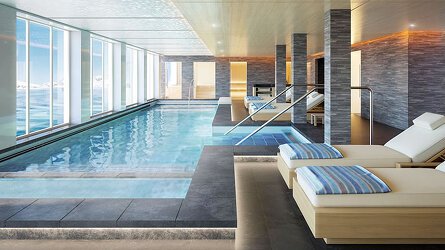
After a day of exploration or just to enhance the relaxation of a day at sea, the on-board Spa will leave you feeling recharged and revitalized. Read more

Viking offer six on board dining options. Beer, wine and soft drinks are available with lunch and dinner at no additional charge of fee. Read more

Viking proudly includes all that you need and nothing you do not. A variety of features and services are standard inclusions on your cruise. Read more
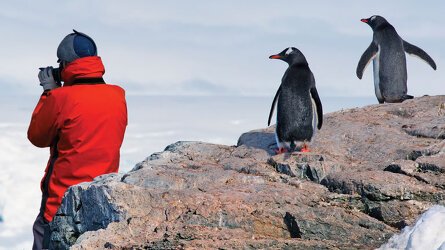
Viking include one complimentary shore excursion in every port of call. Enjoy included experiences around the world. Read more

Brochure

Viking World Cruises (2024-25)
Availability Click on prices below to view cabin upgrades and details
Tour & cruises prices are per person. Prices shown have savings applied, are subject to availability and may be withdrawn at any time without notice. Prices and trip information are correct at the time at this point in time, however are subject to confirmation at the time of booking and are subject to change by Viking. For cruise itineraries, cabin images are sourced from Viking. These should be treated as indicative only. Cabin inclusions, upholsteries and room layout may differ to the image(s) shown depending on the ship selected and your sailing dates.


